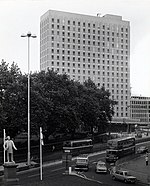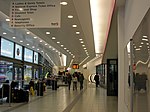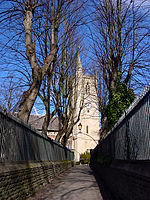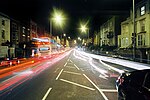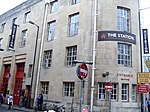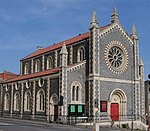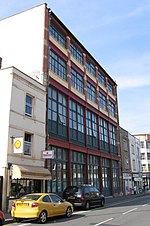Charles Wesley's House
18th century in BristolBiographical museums in BristolGrade II* listed buildings in BristolGrade II* listed museum buildingsHistoric house museums in Bristol ... and 4 more
History of MethodismHouses completed in the 18th centuryReligious museums in EnglandUse British English from August 2015

Charles Wesley's House (grid reference ST589736) is a restored historic building at 4 Charles Street, Bristol, England. From 1749 to 1778 it was the house of Charles Wesley, hymn writer and co-founder of Methodism, and his wife Sarah Wesley, née Gwynne. It was Charles Wesley's main residence during 1756–71. It was the childhood home of his sons Charles Wesley junior and Samuel Wesley. They were musical child prodigies, who both became renowned organists and composers. The house's interior has been restored to its 18th-century appearance, with period fittings.
Excerpt from the Wikipedia article Charles Wesley's House (License: CC BY-SA 3.0, Authors, Images).Charles Wesley's House
Charles Street, Bristol Kingsdown
Geographical coordinates (GPS) Address Nearby Places Show on map
Geographical coordinates (GPS)
| Latitude | Longitude |
|---|---|
| N 51.4603 ° | E -2.5923 ° |
Address
Charles Street
Charles Street
BS2 8HU Bristol, Kingsdown
England, United Kingdom
Open on Google Maps
